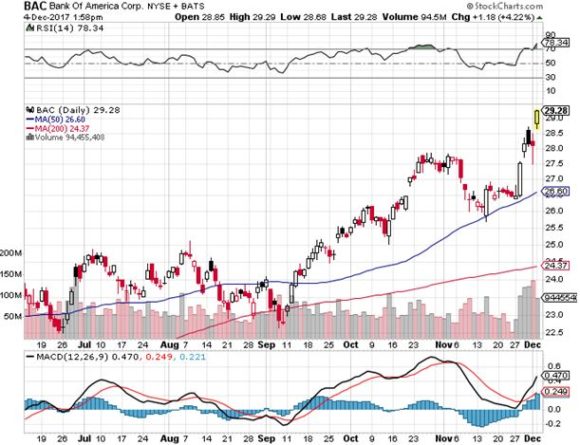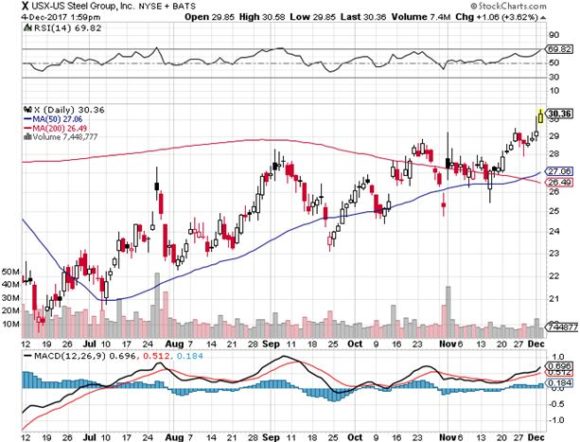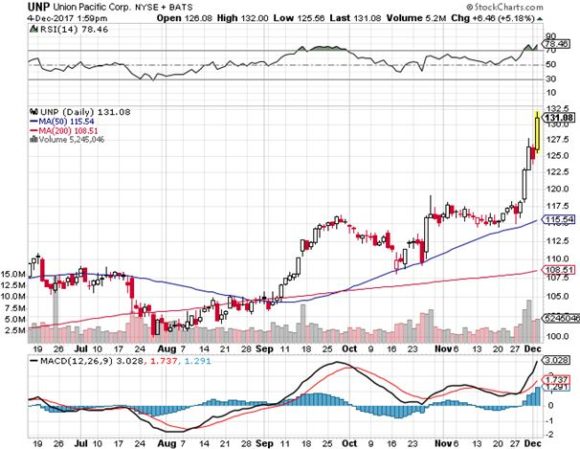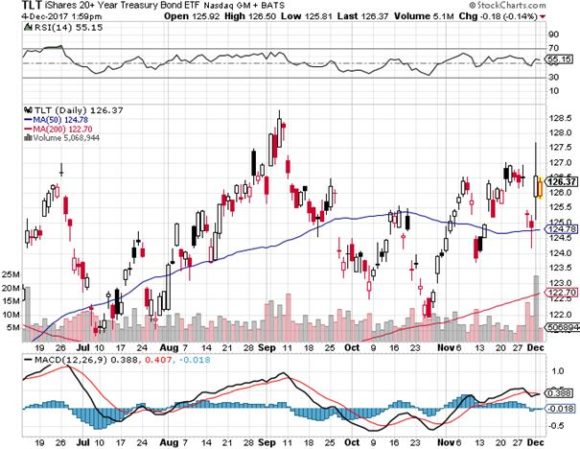The greatest remaking of the US economy in history looks like it is about to be signed into law. I have been running the numbers, and the impact on your portfolio is pretty clear-cut. I'll summarize the high points and then go into detail on each measure.
1) It will create a higher high in all asset prices, including stocks and real estate, followed by a lower low later, probably sometime in 2020.
2) New asset allocations will shift out of growth stocks and into value ones.
3) That means new asset allocations will move out of FANG's (AAPL), (FB), etc.) and technology into financials (BAC), industrials (X), transports (UNP), and energy (XOM).
4) Money will move from large international companies which don't pay tax anyway to small domestic ones that do, hence the recent outperformance of the Russell 2000 (IWM) over NASDAQ (QQQ).
5) Bond prices (TLT) will stay higher, and yields lower, for longer. The 1% will receive the overwhelming amount of benefits from the tax bill, and they will pour most of this newfound wealth into capital preservation strategies in fixed income markets. This is consistent will all past economic cycles. However, US government deficits are already rocketing, and that will eventually take bonds down.
6) All funds repatriated from abroad will go into more stock buybacks and increased dividend payments. This is what happened with the last repatriation in 2003.
7) Stocks will rise in 2018 at half the 2017 rate, but with higher volatility. This is typical for the last year of the bull market.
8) The net impact on the US economy will be either zero or a small negative. Blue states that deliver nearly half of US consumer spending, like California, New York, New Jersey, Illinois, and Washington, are about to get hit with massive tax increases, depressing consumption. There will NOT be an offsetting increase in spending in red states, where tax windfalls will be saved, and not spent.
9) There will be no increase in employment. The same is true with inflation, which is now largely technology driven.
10) However, stimulus while economic activity is at a decade high will scare the Fed into raising interest rates sooner than later. Whatever gains companies see from a lower tax rate will be offset by higher interest rates, with the net effect on earnings at zero.
11) There will be no increase in capital spending, as companies are now hoarding record levels of cash and have no need for additional finance. They will only add to capacity if they see an immediate return, not something any intelligence management does in the ninth year of an economic recovery.
12) Short term traders were punished by the loss of FIFO (first in, first out) accounting, which amounts to a new back door capital gains tax.
13) The bill is a huge picker of winners and losers in the economy. Subsidies and write offs were particularly focused on the oil and commercial real estate industries. Money will move out of sectors with the lowest effective tax rate over the past five years (technology), to those with the highest tax rate (energy).
Most of the tax bill will be reversed the next time there will be democratic control of the government, which could be in as little as three years.
It's really hard to see how ANY blue state House Republican gets reelected in November after voting for an average $10,000 tax increase for their constituent homeowners, and there are 60 of those.
So companies are NOT going to be making any large long-term investments based on taxes remaining in their current form for very long.
Regular readers of this letter are already aware that my Trade Alert recommendations have been following the above line of logic since July.
It is all part of my strategy of dealing with expensive markets by only buying cheap stuff.
Those who followed my advice, well done!
Highest Effective Tax Rates Over the Past Five Years
35% Energy
33% Telecom
32% Industrial
31% Utilities
30% Consumer Discretionary
30% Consumer Staples
28% Financials
27% Materials
26% Health Care
24% Technology







